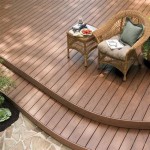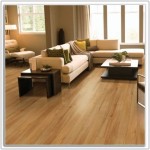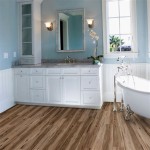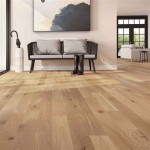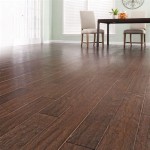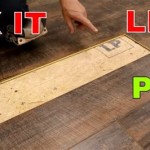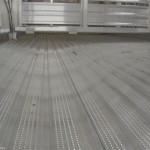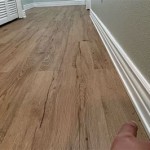Real Hardwood Floors: Understanding the Cost Per Square Foot
Real hardwood floors are a highly sought-after flooring option, prized for their durability, beauty, and timeless appeal. However, the cost of real hardwood flooring can be a significant investment for homeowners. Understanding the factors influencing the cost per square foot is essential for budgeting and making informed decisions. This article will delve into the various aspects that contribute to the overall expense of installing real hardwood floors.
The price of real hardwood flooring is not a fixed number. It's influenced by several variables, including the type of wood, its grade, the width and thickness of the planks, the finish, and ultimately, the installation costs. These variables interact to determine the final cost per square foot that a homeowner can expect to pay. A comprehensive understanding of these elements is crucial for accurate budgeting.
Key Factors Influencing Hardwood Flooring Costs
Several factors contribute to the overall cost of real hardwood flooring. These factors can be broadly categorized into material costs, installation costs, and preparation costs. Examining each category in detail helps in understanding the total investment required.
Wood Species and Grade
The type of wood used is a primary determinant of the flooring cost. Different wood species possess varying characteristics in terms of hardness, grain pattern, durability, and availability, all of which affect their price. Popular hardwood options include oak, maple, hickory, walnut, cherry, and exotic options like Brazilian cherry or bamboo. Oak, particularly red oak, is often the most affordable choice, while rarer or imported woods can command significantly higher prices.
The grade of the wood also impacts the cost. Grading refers to the appearance and quality of the hardwood planks. Higher grades, such as "clear" or "select," have fewer knots and imperfections, resulting in a cleaner, more uniform look. These grades are typically more expensive. Lower grades, such as "common" grades, have more knots and variations, offering a more rustic aesthetic at a lower price point. The quality and appearance of the selected grade and wood directly correlate to the overall price per square foot.
Plank Dimensions and Construction
The width and thickness of the hardwood planks also play a role in the cost. Wider planks often require more raw material and are therefore more expensive than narrower planks. Wider planks also tend to showcase the natural grain patterns of the wood more prominently, adding to their aesthetic appeal. Thickness, measured in inches, determines the floor's durability and its ability to be refinished in the future. Thicker planks allow for more sanding and refinishing, extending the lifespan of the floor. Consequently, thicker planks are typically more expensive.
The construction of the hardwood plank also matters. Solid hardwood planks consist of a single piece of wood, whereas engineered hardwood consists of multiple layers bonded together with a hardwood veneer on top. Engineered hardwood is often less expensive than solid hardwood, offering greater stability and resistance to moisture and temperature fluctuations. The manufacturing process involved in construction impacts this cost difference.
Finish and Treatment
The finish applied to hardwood floors protects the wood and enhances its appearance. Pre-finished hardwood floors, which are finished at the factory, are generally more expensive upfront than unfinished floors that require on-site finishing. Pre-finished floors offer convenience and consistency in sheen and color, and often offer better warranties. Unfinished floors allow for customized staining and finishing options but require additional time and labor for installation. This also includes the labor of applying on site finishes.
The type of finish also influences the cost. Polyurethane finishes are common and durable, offering good protection against scratches and wear. Oil-based finishes, while requiring more maintenance, offer a natural look and feel. Water-based finishes are low in VOCs and environmentally friendly but may require more coats for adequate protection. Specialized treatments, such as wire-brushing or hand-scraping, which add texture and character to the wood, can further increase the cost.
Installation Costs and Preparatory Work
Installation costs represent a significant portion of the overall cost of hardwood flooring. These costs include labor, materials, and any necessary preparation work. The complexity of the installation and the condition of the subfloor can greatly impact the final price.
Labor and Installation Methods
The cost of labor varies depending on the location, experience of the installer, and complexity of the project. Installation methods include nailing, gluing, or floating. Nailing is the most common method for solid hardwood floors, while gluing is often used for engineered hardwood. Floating installations involve interlocking the planks together without securing them to the subfloor, making it a faster and potentially less expensive option.
The type of installation method used depends on various factors, including the type of subfloor, the type of hardwood flooring, and the homeowner's preferences. The complexity of the pattern, such as herringbone or parquet, can also increase labor costs.
Subfloor Preparation
Proper subfloor preparation is crucial for a successful hardwood flooring installation. The subfloor must be level, clean, and dry. Uneven subfloors may require leveling compounds or shims to ensure a smooth surface for the hardwood. Removing old flooring or dealing with moisture issues can add to the preparation costs. The cost can increase if there is presence of asbestos which needs to be removed by professionals. If the subfloor is damaged or unsuitable for hardwood flooring, it may need to be repaired or replaced, further increasing the total cost.
Additional Materials and Accessories
Besides the hardwood flooring itself, several other materials and accessories contribute to the overall cost. These include underlayment, moisture barriers, adhesives, nails or staples, and transitions. Underlayment provides cushioning, sound insulation, and moisture protection. Moisture barriers prevent moisture from seeping up from the subfloor and damaging the hardwood. Transitions provide a smooth transition between different types of flooring. These materials, although seemingly small, contribute to the final cost on a per-square-foot basis.
Other Cost Considerations
Beyond the factors already discussed, there are other potential costs to consider when budgeting for real hardwood floors. These costs can vary depending on the specific circumstances of the project and the homeowner's preferences.
Removal and Disposal of Old Flooring
If existing flooring needs to be removed and disposed of, this can add to the overall cost. The cost of removal is dependent on the type of flooring being removed (e.g., carpet, tile, vinyl), the size of the area, and the ease of access. Disposal fees also vary depending on the location and the volume of waste. It is advisable to factor these costs into the budget from the outset.
Moving Furniture and Appliances
Moving furniture and appliances out of the area being floored can be time-consuming and physically demanding. Some homeowners may choose to hire professional movers to handle this task, adding to the overall cost. Alternatively, they may opt to move the items themselves, which can require renting equipment or enlisting the help of friends or family. The cost of appliance disconnecting and reconnecting, particularly with gas or water lines, should also be considered.
Permits and Inspections
In some areas, permits may be required for flooring installations, especially if structural changes are involved. The cost of permits varies depending on the location and the scope of the project. Inspections may also be required to ensure compliance with building codes. It is imperative to check local regulations and obtain the necessary permits before commencing the project.
Maintenance and Cleaning Supplies
Maintaining hardwood floors requires specific cleaning products and equipment. Investing in quality hardwood floor cleaner, mops, and other supplies is essential for preserving the beauty and longevity of the floors. The cost of these supplies should be factored into the overall budget as an ongoing expense. Regular maintenance, such as dust mopping and occasional cleaning with a hardwood floor cleaner, can help prevent dirt and grime from damaging the finish and extending the life of the floor.
In conclusion, determining the real hardwood floor cost per square foot requires considering many factors, including the species and grade of wood, the plank dimensions, finish, installation methods, subfloor preparation, and other potential expenses. Careful planning and budgeting and the evaluation of all aspects are essential for ensuring a satisfactory outcome.

Hardwood Flooring Cost 2024 Per Square Foot Mk

How Much Does Hardwood Flooring Cost 2025

How Much Does Hardwood Flooring Cost 2025

The Complete Guide To Flooring Costs By Type Twenty Oak

How Much Does Hardwood Flooring Cost 2025

Cost To Install Hardwood Floors The Home Depot
How Much Hardwood Flooring Costs And To Save

How Much Does Hardwood Floor Installation Cost In Charlotte Nc

Hardwood Floor Replacement Cost Floorz To Your Doorz

How Much Does It Cost To Refinish Hardwood Floors In 2025
Related Posts

